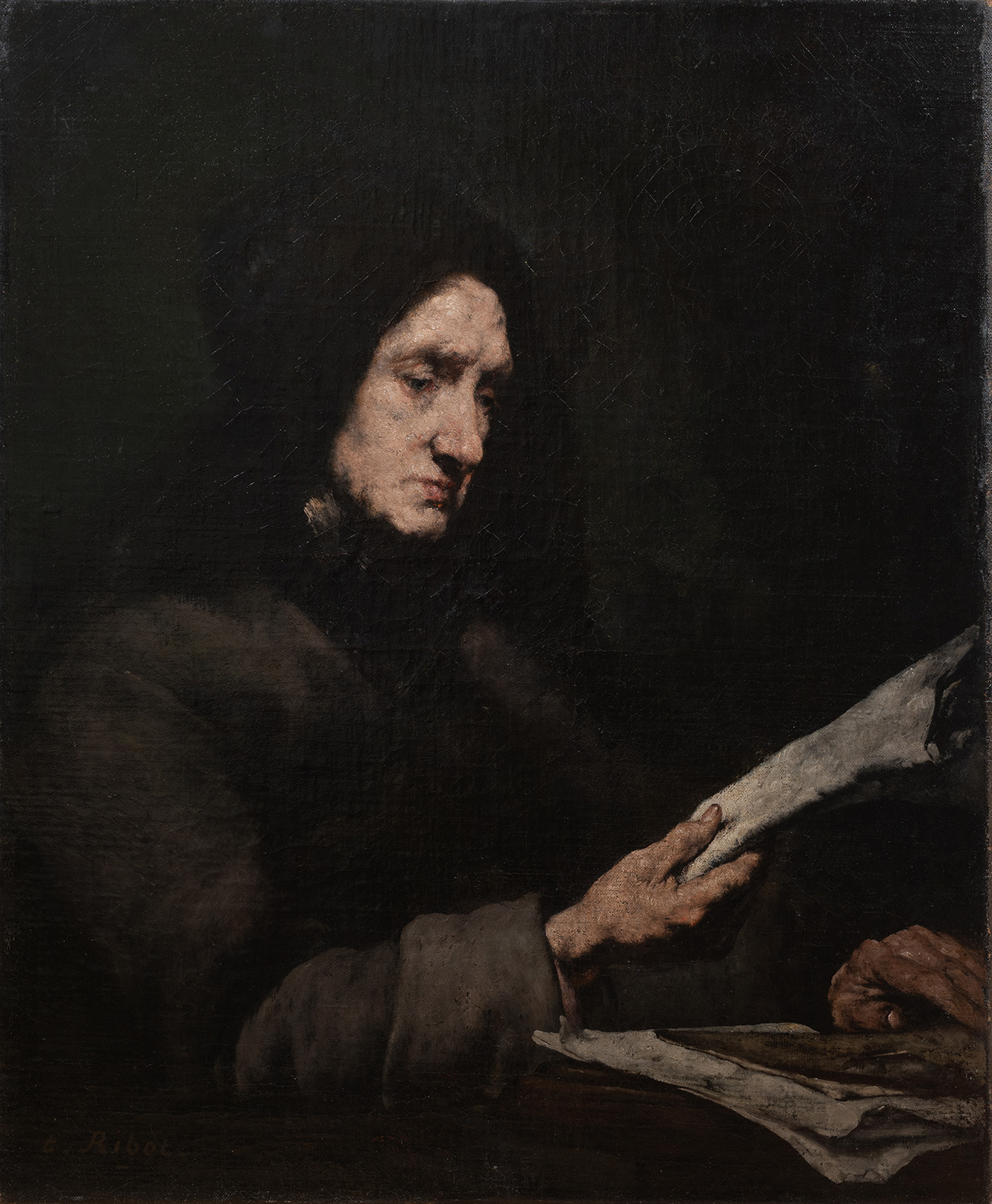Oil on canvas
73.7 × 61 cm (29 × 24 in)
Signed (lower left): “t. Ribot”
Provenance:
Mrs. Michel Collection, France, by 1890
Anonymous sale at Hôtel Drouot, Paris, 22-23 December 1896, lot 19
Anonymous sale at Hôtel Drouot, Paris, 5 April 1930, lot 93
Mr. & Mrs. Moïse Levy de Benzion (1873-1943), Dravail, France (inv. no. LB 148)
Confiscated by the Einsatzstab Reichsleiter Rosenberg (ERR) from the above, Chateau de la Folie, Dravail, December 1940
Transferred to the Jeu de Paume, January 1941
Transferred to Füssen, Germany, 16 October 1941
Recovered from the 'Lager Peter' art repository at Alt-Aussee (inv. no. 891/7) and transferred to the Munich Central Collecting Point, 26 June 1945 (MCCP no. 1087/7)
Repatriated to France by the above, 18 April 1946
Restituted by the above to the heirs of Mr. & Mrs. Moïse Levy de Benzion (1873-1943), Dravail, France, 29 May 1946
Private collection, France
Anonymous sale at Hôtel Drouot, Paris, 13 December 1993, lot 89, as “Portrait de femme”
Sale at Christie’s, New York, European Art Part II, 15 October 2021, lot 12
Private collection
Exhibited:
Paris, Galerie Bernheim Jeune, Exposition T. Ribot, Catalogue raisonné des œuvres exposées, May-June 1887, no. 65, illustrated with an engraving
Paris, Palais de l’Industrie, Salon de la Société National des Beaux-Arts, 1890
Paris, Galerie Bernheim Jeune, Exposition T. Ribot, Deuxième Série, June-July 1890
Saint-Nicolas-d'Attez, Église de Saint-Nicolas-d'Attez, T. Ribot. Peintre et aquafortiste né à Saint-Nicolas-d’Attez, 16-25 May 1982
Alongside more modest works such as Two Cooks and Woman Reading, Ribot conceived ambitious compositions that retained psychological intensity while acquiring new narrative weight. Family Deeds (Les Titres de famille) was first exhibited in 1887 at the monographic exhibition dedicated to the artist at the Galerie Bernheim-Jeune, and again in 1890 at the Salon of the Société Nationale des Beaux-Arts and the Galerie Bernheim-Jeune. That same year, an etching of the work by Fernand Desmoulin was published in the Gazette des Beaux-Arts. Another version of the composition, today in the Musée des Beaux-Arts de Reims, shows the woman in reverse profile (fig. 1).
Whereas Woman Reading (pp. 20-21) treats a household activity with modest intimacy, Family Deeds transforms the motif of a woman with documents into a solemn meditation on responsibility and legacy. The figure is illuminated with a concentrated light that sanctifies the scene in the manner of Ribera. As Dominique Lobstein remarked of the Reims version, Ribot’s maxim that “the eyes bring life to the face, the hands give spirit to the head” finds its fullest expression here: the painter directs the light to her face and hands while her body almost merges with the background.
